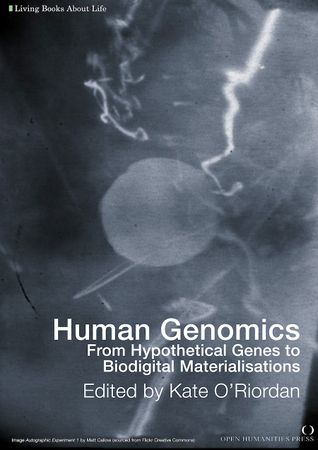Human Genomics

Human genomics: from hypothetical genes to biodigital materialisations
Edited by Kate O'Riordan
Contents
Introduction
Sections
Section: 1
Section: 2
Section: 3
Section: 4
Section: 5
Section: 6 - Biochemistry, patents and genomics
In the early 1980s the technique called PCR – Polymerase Chain Reaction was developed (see Rabinow for an anthropological account). Kary Mullis won the Nobel Prize for his work in this area but his key article ‘An unusual origin of PCR’ is not freely available and only accessible via subscription. However, a far more detailed and accessible article in the Journal of Biomedical Discovery and Collaboration (Fore, Weichers and Cook-Deegan 2006) is more useful at this point and is included here.
This article examines the effect that the patent on PCR had on its use in the sciences. This is a useful piece because it provides a review of PCR in the genome sciences but also because it considers two key issues in genomics with particular relevance for the humanities. These are the related issues of commercial science and patenting.
The two issues are linked but not inseparable. Commercial companies and publicly funded research institutions both take out patents on inventions or discoveries. PCR is a technique for reproducing large amounts of DNA and this facilitates sequencing. Kary Mullis’s work on this area was developed in a commercial setting. Patenting and other commercial imperatives in the life sciences are part of the everyday reality of working in this area. Genomics is a 20th century science and has been developed within a highly commercialised system.
The most controversial dimensions of commercial practice in this area is not the patent on PCR per se, but is around the question of the patenting of genes and of genetic tests. This area is discussed further in relation to DNA in general in The Ethics of Patenting DNA: A Discussion Paper (2002, Nuffield Council on Bioethics).
- Fore, Joe Jr., Wiechers, lse
R. and Cook-Deegan, Robert. 2006. The effects of business practices, licensing, and intellectual property on development and dissemination of the polymerase chain reaction: case study Journal of Biomedical Discovery and Collaboration 2006, 1:7doi:10.1186/1747-5333-1-7
Section: 7 - Constructing maps
- Botstein D, White RL, Skolnick M, Davis RW
(1980) Construction of a genetic linkage map in man using restriction fragment length polymorphisms. Am J Hum Genet. 32: 314-31
Abstract: We describe a new basis for the construction of a genetic linkage map of the human genome.
Subcommittee of the Health and Environmental Research Advisory Committee (HERAC). 1987. Report, Office of Health and Environmental Research, Prepared for Dr. Alvin W. Trivelpiece Director, Office of Energy Research
U.S. Congress, Office of Technology Assessment. 1988. Mapping Our Genes-The GenomeFast? OTA-BA-373 (Washington, DC: U.S. Government Printing Office, April 1988).
Section: 8 - Making catalogues
In 1966 a medical field coalesces through a catalogue and Dr Victor McKusick publishes the first print edition of Mendelian Inheritance in Man (MIM). This was an attempt to catalogue what was known about Mendelian phenotypes – or the physical expression of genetic material - as medically relevant characteristics. It later became Online Mendelian Inheritance in Man (OMIM).
Abstract: McKusick's Online Mendelian Inheritance in Man (OMIM®; http://www.ncbi.nlm.nih.gov/omim), a knowledgebase of human genes and phenotypes, was originally published as a book, Mendelian Inheritance in Man, in 1966. The content of OMIM is derived exclusively from the published biomedical literature and is updated daily. It currently contains 18 961 full-text entries describing phenotypes and genes. To date, 2239 genes have mutations causing disease, and 3770 diseases have a molecular basis. Approximately 70 new entries are added and 700 entries are updated per month. OMIM® is expanding content and organization in response to shifting biological paradigms and advancing biotechnology.
Section: 9 - The new genetics
The genetics of the 1950s helped to signal a break from the associations that had been made between human genetics and forms of social eugenics in the late 19th century and first half of the 20th century. This period of ‘discovery’ science also lead the way in providing narratives of scientific heroes as ordinary guys (McNeil). A version of scientific discovery that still resonates today as genetic heroics were reproduced by Craig Venter and John Sulston during the Human Genome Project, in biographies, autobiographies, popular science writing, news media and documentary.
In July 25, 1953 Rosalind Franklin and Gosling detail the distinctions between the A and B structures of the double helix in DNA and Watson and Crick publish their article on the structure of DNA.
- Franklin R. and Gosling R.G. 1953. Evidence for 2-Chain Helix in Crystalline Structure of Sodium Deoxyribonucleate Nature 172, 156-157 (1953)
- Watson J.D. and Crick F.H.C. 1953. A Structure for Deoxyribose Nucleic Acid Nature 171, 737-738 (1953)
Attributions
